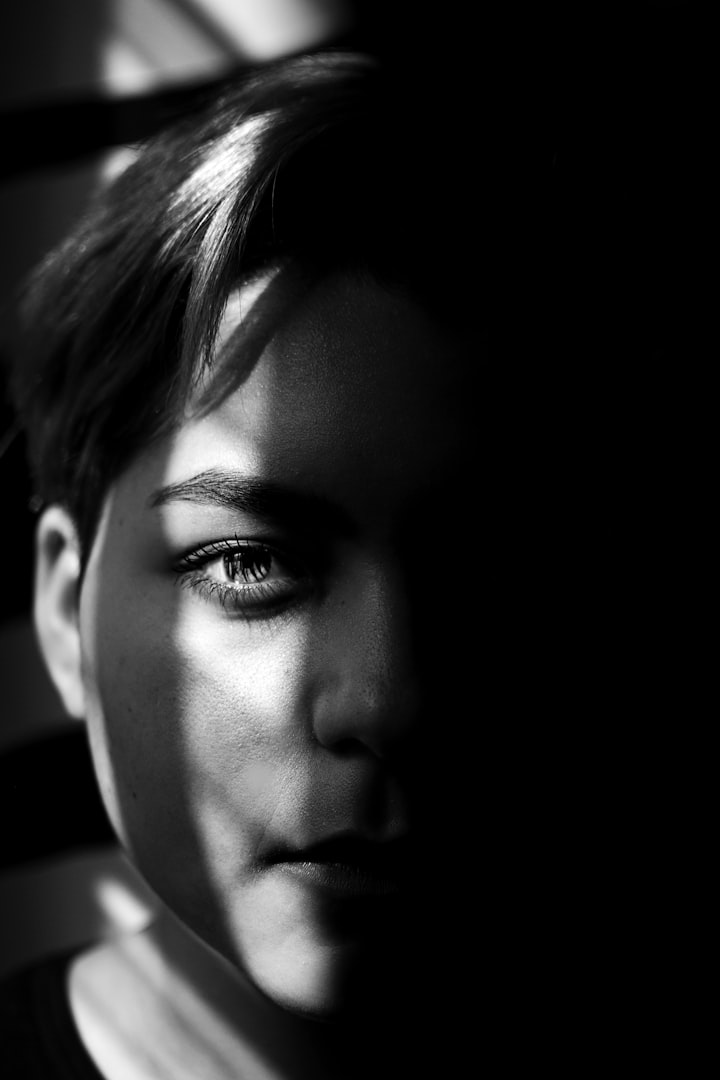Anatomy of the Face
You Will Never Look at Your Face Like Before

I loved watching Botched – American reality television series that premiered on E! in 2014. It followed plastic surgeons Terry Dubrow and Paul Nassif as they "remedy extreme plastic surgeries gone wrong."
It was very interesting for me to see, what people did not like about themselves, how they wanted to change their face and change the message that their face was giving.
I remember when they got identical twin sisters that wanted to look completely identical. They dressed the same way, had the same hair, had been eating the same amount of same food to maintain the same body. They had the same job, same phone number, same account, and even the same boyfriend.
Imagine their surprise, when doctor Terry Dubrow had to explain to them, that even their perfectly identical faces are not identical. “look”, - he’d say – “brows on you are slightly higher, your lips are more downturn, and here you have more space between eyelids than you do, and your cheeks are fuller” … The girls were shocked that somebody discovered so many differences on their so believed identical faces. They were shocked that each is still unique no matter how much they tried to be the same exact.
Nobody can be completely identical to another person, because our face is like a map of our life – it shows the way we have gone till now; it shows if we were mostly happy or mostly sad, sarcastic or hesitant, opinionated or laughing a lot.
Our face is a Map of Life.
On this map that our life created on our face, sometimes we try to erase some of the footprints left by experiences, fueled by the most repetitive emotions – no matter, good or bad. Hard laughter loves creating deep wrinkles around the eyes – different from fine lines called “crow feet”. Often showed “surprised” emotions cut alongside the forehead; not liking something will most likely affect the area between eyes and inner corners, creating a so-called “eleven”, two parallel deep lines at the base of our nose. I have noticed on myself, that I had a longer and deeper wrinkle on one side of my lips and was like: why? I sat in front of the mirror, while talking to a friend on the phone and noticed, that every time I express doubt, combined with “meh”, I lift my right lip corner in disguise. I was doing it to myself.
Sometimes we look at the face of an actor we admire, trying to understand, what really makes this face so unique, so appealing, so powerful? It’s those little lines, tiny wrinkles, little bags under the eyes and dimples around the lips – all that, that goes on the face in layers, like oil painting, wherewith every swipe adds something meaningful to it: warmth, definition, contrast, contour, sadness, emptiness, power, strength, decisiveness, vulnerability. When we try to look like that person, we mimic their makeup, but as long as our own face map is different, it will not look the same, but more importantly, it will not carry the same message of sadness, or greatness or whatever we like about the person we try to mimic.
In 2012 photographer Lalage Snow embarked on an 8-month-long project titled We Are The Not Dead featuring portraits of British soldiers before, during, and after their deployment in Afghanistan: https://my nmet.com/lalage-snow-we-are-the-not-dead/moder
"The three-panel juxtaposition allows the viewer to observe the physical changes a stationed soldier in a war zone goes through, - narrates the journalist Pinar Noorata in this article, - Time is sped up for these men under the beating sun, amidst combat. Regardless of age, the boys that went in came back as men with experiences beyond their years. As weathered and worn as their skin or sunken in faces may appear, it’s their dilated eyes that are the most telling". Look at these pictures and the idea of a face map will become more than clear: we see, how their face changes alongside the emotions they experience or express, alongside their personality changing unusually fast.
Our face has its Architecture.
Besides the Map of Life, which is tied to emotions, there is also the Architecture of the Face. At Sephora Soho I used to do 5 makeovers every day, so around 25 a week. In a month I’d have almost 100 faces beat and in three years it went over 3,500 makeovers, so I had an impressive database to find out the importance of Architecture.
When I say Architecture, I mean Distances: tiny distances that are game-changers when we build a face: there are noticeable distances (let’s say, from the upper line of a brow to a hairline), which would translate into “high” or “low” forehead), the distance between inner corners of the eye (which would translate into “wide-set eyes” or “close-set eyes”) and there are distances that take forever to get noticed.
What defines the architecture of our face, is mostly genetics. The Genetics we call the heritage – we call it “I have my dad’s eyes” and “Thank my mom for this nose”. These are the features we’d been given after our birth, some are prominent immediately, some change with age, and some only appear after certain years! The distance between a jawline and a cheekbone, the distance between the ear and outer corner of the eye, the distance between upper or lower lips – these are bricks that build our belonging: to whom we belong, where we are coming from.
Our genetics affect the Architecture of the Face in a way we cannot control – dark circles that run in the family, long noses, large lips… With makeup we can modify the heritage: make those less visible, less prominent, or different. There is no wrong or right in doing or not doing it.
About the Creator
Tamara Gunash
The third generation of Eastern European witches. A child of the Soviet Union, lived through actual Communism. A journalist. A makeup artist. A realtor. Speak 4 languages. Made NYC my hometown in 2009.






Comments
There are no comments for this story
Be the first to respond and start the conversation.